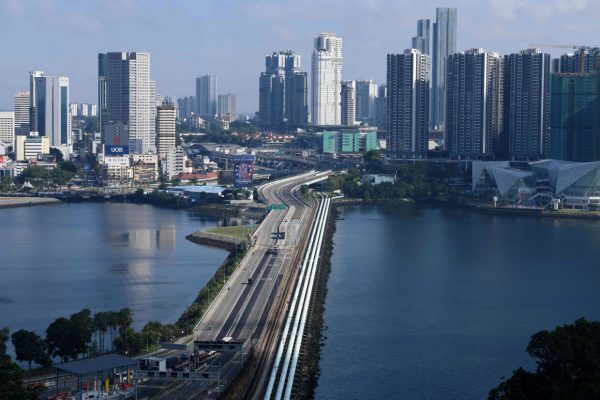SINGAPORE, 29 June 2020: Cross-border travel between Singapore and Malaysia will get the green light soon following discussions between Prime Minister Lee Hsien Loong and his Malaysian counterpart Muhyiddin Yassin, Singapore’s Ministry of Foreign Affairs reported in a press statement on Saturday.
Singapore’s Prime Minister Lee Hsien Loong and the Malaysian Prime Minister Tan Sri Muhyiddin Yassin discussed details of a phased resumption of cross-border travel. Any bilateral arrangement would have to include mutually agreed public health protocols, to preserve the public health and safety of citizens on both sides, the statement read.

Essential business
They reached an agreement to establish a Reciprocal Green Lane (RGL) and a Periodic Commuting Arrangement (PCA) to address the needs of different groups of cross-border travellers.
The RGL will facilitate cross-border travel for essential business and official purposes between both countries. Travellers would have to adhere to a set of Covid-19 prevention and public health measures. The conditions are currently being discussed and will have to be mutually agreed upon by both countries.
Details released by the ministry suggest the PCA will allow Singapore and Malaysia residents who hold long-term immigration passes for business and work purposes in the other country to periodically return to their home countries for short-term home leave. They will be able to return home for leave after spending at least three consecutive months in their country of work, and they will be allowed to re-enter their country of work after their home leave.
Prime Minister Lee and Prime Minister Muhyiddin have tasked their officials to work on the operational details of the RGL and PCA, and to continue discussions on other proposals to gradually facilitate more cross-border movement of people, so as to ensure a stable recovery by both Singapore and Malaysia from the COVID-19 situation.
Malaysia studies green channels
Malaysia hinted earlier in the month it was considering opening the country to international tourism by the end of August, but in the meantime, it was floating the idea of “green channels” that would require bilateral agreements with countries that have relatively positive performances in the battle against Covid-19.
Green channels could be negotiated with Singapore (43,246 cases), Brunei (141), Australia (7,641), New Zealand (1,522), Japan (18,254) and South Korea (12,653). Malaysia has reported 8,616 cases and a death toll of 121.
Forgotten ASEAN travel
Tourism experts have suggested ASEAN as a group should do more to broker a consistent policy on travel corridors. They acknowledge that it makes sense to open domestic travel first but by the same token opening travel between neighbouring ASEAN member countries should have been a phase two priority. EU countries that initially went their own way in the lockdown and reopening phases are now recognising a consistent approach across all member states would be more beneficial to improve clarity for consumers and airlines.
ASEAN nations have tended to talk about trave bubbles with China, South Korea, New Zealand and Australia but there have been examples of second wave outbreaks that are worrisome. On the other hand, ASEAN nations appear to have faired better in the battle with Covid-19. Cambodia, Laos, Myanmar, Thailand and Vietnam report much lower cases and fatalities but are rarely mentioned under the controversial topic of travel bubbles.
Thailand has been recognised for its exemplary public health performance (3,162 cases, 58 fatalities) during the pandemic, but tourism officials have become fixated on the pursuit of wealthy tourists and have ignored neighbouring countries that also display positive performances against Covid-19. Opening cross-border and air travel with Laos (19 cases), Cambodia (139 cases) and Vietnam (355 cases) would boost the economy and provide support for SMEs in tourism. All three nations report zero fatalities. Creating a travel corridor with Vietnam would boost travel to Thailand’s main tourist resorts in South Thailand and on the eastern seaboard provinces of Chon Buri and Rayong. Based on cases and fatalities, the risk of infection from Vietnamese travellers is lower than from travellers resident in Thailand strengthening the argument that the Civil Aviation Authority of Thailand should now open the air space for at least ASEAN carriers.







